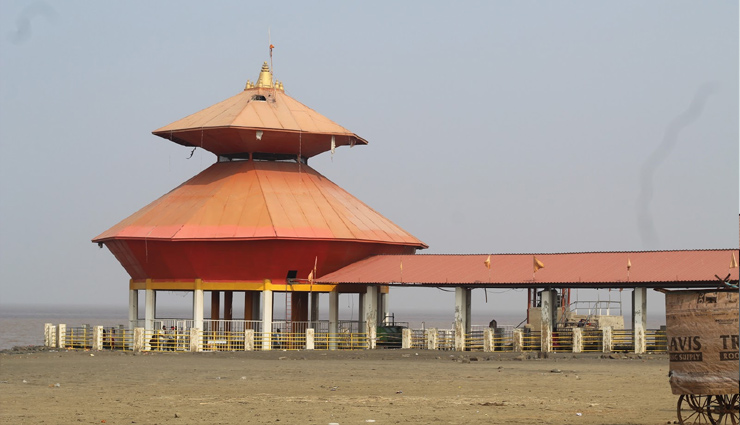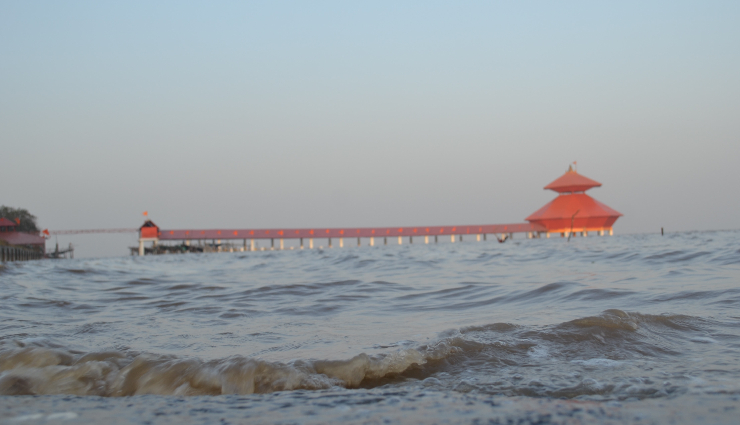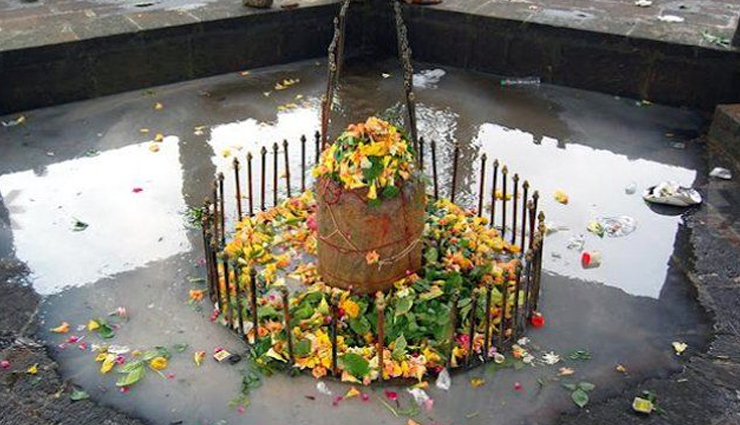- Home›
- Holidays›
- A Shrine That Disapperas- 8 Interesting Facts About Stambheshwar Mahadev Temple In Gujarat
A Shrine That Disapperas- 8 Interesting Facts About Stambheshwar Mahadev Temple In Gujarat
By: Priyanka Maheshwari Wed, 24 Apr 2024 3:02:35

The Stambheshwar Mahadev Temple exhibits an intriguing phenomenon wherein it vanishes and reappears periodically owing to its proximity to the seashore and the regular ebb and flow of tides.
Situated near the Arabian Sea, roughly an hour's drive from Patan, Gujarat, lies the village of Kavi Kamboi. Within this unassuming village lies a distinctive gem - the Stambheshwar Mahadev Temple, also recognized as the ‘Disappearing Temple.’
While historical records indicate the temple's existence for about 150 years, local legends and the temple’s website propose a much more ancient origin. According to the Skanda Purana, the mythological warrior Kartikeya, after defeating the demon Trakasur, experienced remorse as Tarkasur was a devotee of Lord Shiva. Advised by Lord Vishnu, Kartikeya established and worshipped Shivlings to seek solace. Following this, Kartikeya installed three Shivlings in different locations, with the Stambheshwar Temple being one of them. The temple’s distinctive feature lies in its close proximity to the sea. During high tide, the temple is engulfed by seawater, submerging its exterior and even the inner sanctum, leaving only the towering 4-foot Shivalinga partially visible. As the tide recedes, the temple gradually resurfaces, revealing its weathered facade and intricate architecture. This captivating phenomenon occurs twice daily, captivating both travelers and devotees alike. This distinctive vanishing and reappearing act has earned the temple the popular moniker ‘Gayab Mandir,’ signifying ‘disappearing temple’ in Hindi.

# Submerged during high tide: One of the most captivating features of this temple is that it gets submerged underwater during high tide and reappears during low tide. This unique phenomenon occurs twice a day.
# Connection to Lord Shiva: The temple is dedicated to Lord Shiva, who is worshipped here as Stambheshwar Mahadev. It is believed that the lingam (symbol of Lord Shiva) in the temple was originally situated on the shore. However, due to the changing tides, it is now located in the sea.

# Religious significance: According to Hindu mythology, taking a dip in the waters surrounding the temple during low tide is considered highly auspicious. It is believed to cleanse sins and bestow blessings upon devotees.
# Architectural marvel: The architecture of the Stambheshwar Mahadev Temple is noteworthy. It features intricate carvings and designs, showcasing the rich cultural heritage of Gujarat.
# Accessible during low tide: Visitors can only access the temple during low tide when the path to the temple emerges from the water. This adds an element of adventure and thrill to the pilgrimage experience.
# Natural surroundings: The temple is situated amidst serene natural surroundings, with the Arabian Sea on one side and lush greenery on the other. The scenic beauty of the location enhances the spiritual ambiance of the temple.
# Spiritual significance: Devotees from all over the country visit the Stambheshwar Mahadev Temple to seek blessings, especially during auspicious occasions and festivals dedicated to Lord Shiva.
# Preservation efforts: Due to the temple's unique location and the threat of erosion and natural disasters, efforts have been made to preserve and protect the structure. These efforts include measures to reinforce the temple's foundation and safeguard it from environmental damage.





